Home design trends are a-changin’. We asked some stellar Sonoma designers what they predict is coming in 2023. Click through the above gallery to find out how to style your home in the new year.
The Top Home Design Trends Coming in 2023


Home design trends are a-changin’. We asked some stellar Sonoma designers what they predict is coming in 2023. Click through the above gallery to find out how to style your home in the new year.
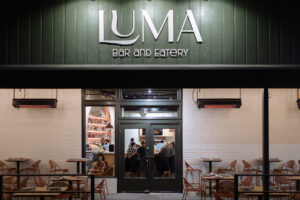
The long-awaited plant-focused restaurant from Shuckery owner Jazmine Lalicker has debuted on the Petaluma waterfront. Luma Bar and Eatery officially opened Sunday, Dec. 18.
Filled with soft organic colors, modern furnishings and a spectacular new bar, the 3,600-square-foot space, including a heated patio overlooking the river, is unrecognizable from its former incarnation as Dempsey’s bar.
Sustainability is a pillar of the new restaurant. The primarily meatless menu of sustainably sourced dishes is overseen by chef and (maybe a little ironically) butcher Travis Day, who launched Thistle Meats in Petaluma.
Cocktails have a similar eco-aware mission. Alfie Turnshek heads a well-thought-out bar program with a refreshingly large selection of low- or no-alcohol concoctions with fresh herbs, super juices and syrups. Cocktails ($16) use citrus as an accent rather than a focus due to the high environmental impact of transporting out-of-season fruit, Lalicker said.
Instead, drinks like the Changeling include aquavit, gin with a pineapple-vanilla infusion, Icelandic yogurt, lemon and fennel liqueur that’s remarkably refreshing yet creamy and warming. A new favorite is the Hard Aport with bourbon, rye, port wine, espresso and orange oil.
The main menu is broken into sections with snacks ($8 to $10), appetizers ($14 to $20), mains ($20 to $28) and sweets ($12). Protein, including Liberty Duck rillette ($10) and Stemple Creek Brisket ($12), are sides you can add to main courses or eat separately.
Lalicker and Day have taken a forward-thinking approach to sourcing and presentation, using thin 4-ounce cuts of Stemple Creek’s carbon-neutral beef or duck wings to make the rillette rather than the more common duck breast.
“We’re working to move cuts of meat that typically wouldn’t sell, so they’re not going to waste. Everyone buys duck breast, but not the wings,” Lalicker said. The wings are slow-cooked in fat and seasonings, shredded and mixed with fat in jars or ramekins. The result is a dense spread of rich meat.
There are already several fan favorites on the menu, including the Braised Greens and Beans ($24) with charred cabbage, Swiss chard and beans in a savory broth or the pillowy gnocchi ($20) with roasted sunchokes and mushrooms.
“We want people to understand that we are here to listen to them. We want to make this a place you want to go. I think Petaluma is ready for this,” Lalicker said.
The restaurant is open 5 to 10 p.m. daily. Reservations are suggested. 50 E. Washington St., Petaluma, 707-772-5037, lumaeatery.com
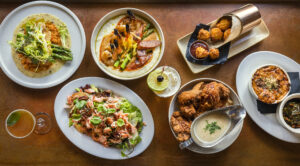
Click through the above gallery for a peek at each restaurant and menu highlights.
After two devastating years for the restaurant industry, independent restaurateurs who hung on by their fingernails through the pandemic hoped 2022 might be different. Instead, mounting inflation, staffing shortages, supply-chain problems and a general dearth of hope led to a wave of closures and disappointments.
But that’s not the whole story. Dozens of innovative restaurateurs not only opened in 2022 but found critical and commercial success. Some started small, with pop-ups to gauge interest, while others were multi-million-dollar launches that led to national exposure.
There’s no simple formula for success. Indeed, some restaurants eventually will fail while others continue to succeed. Yet a few factors seem to indicate a winning plan: location (Sebastopol and Healdsburg are hotbeds of food innovation), price (very high or very low), previous success as a pop-up or other food business and an eye-catching menu (very familiar or very unfamiliar).
The dining scene in Sonoma County is changing as the population changes. Younger families want good food at a good price. Many new restaurants have young cooks in the kitchen who have bold ideas and can take huge risks. Experiential dining — where eating is just part of the adventure — is gaining popularity, as are highly personalized multi-course meals.
Most of the restaurants on this list use hyper-local, seasonal ingredients that diners want and serve plant-based dishes that appeal to health-conscious eaters hoping to reduce their carbon footprint. All are service-focused and locally owned.
Dining likely will never return to what it was before 2020. Our tastes and habits have changed, and restaurateurs have to change, too.
Here are the most important openings of 2022.
With one of the buzziest openings of the year, Animo took Instagram by storm; its whole Spanish turbot, Iberico pork, visually striking apple wall and fiery hearth-cooked food appeared on just about every local chef’s social media. The menu is Basque meets Korean meets Californian, and owners Josh Smookler and Heidy Mu keep things interesting with new dishes. 18976 Sonoma Highway, Sonoma. Instagram: @animo_restaurant
Why it matters: Esquire magazine named Animo to its 2022 list of Best Restaurants in America, and we’ll be surprised if it doesn’t get some Michelin stars in 2023. Smookler and Mu, who are young parents, left a life in New York to settle in Sonoma, where they invested their life’s savings to make a splash in Sonoma County’s food scene.
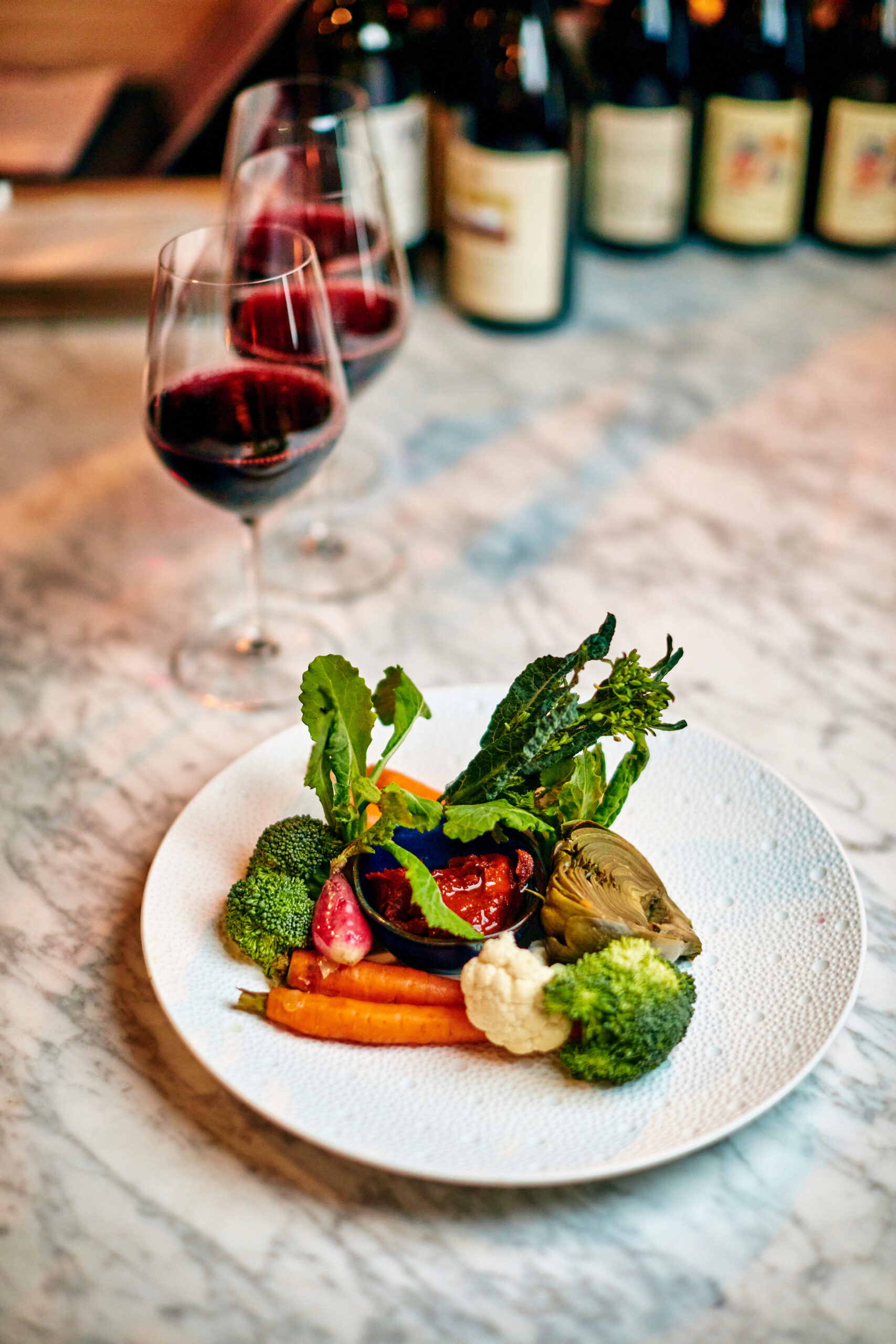
A Michelin star just three months after debuting made it clear Cyrus was the most important Sonoma County restaurant opening in 2022. A decade after closing the original Cyrus in Healdsburg (it had two Michelin stars when it closed in 2012), Chef Douglas Keane opened this new multi-million dollar Geyserville space serving a mix of opulent, painstakingly created European and Japanese bites arranged with culinary tweezers and served on bespoke ceramic dinnerware. With panoramic views of Alexander Valley, a 4,000-plus bottle wine list and doting service, it doesn’t get a whole lot more pinkies up than this $295, 17-course prix fixe meal. However, compared to other high-end Wine Country restaurants that charge upwards of $500 per person for their multi-course meals, it’s a relative deal.
Why it matters: With its unorthodox staffing model, Cyrus employs only about 20 staff, a third of the staff size of the original Cyrus. All employees share tips and work both front and back of the house. Insiders are watching closely to see if the model works and if it could be the future of sustainable, living-wage jobs in the restaurant industry.
Vertice Hospitality, co-owned by Kyle and Katina Connaughton of Michelin-starred Single Thread, and their staff put months of research and development into making an entirely plant-based menu (no meat, dairy nor ingredients with animal products) that would appeal to a broad swath of eaters. Some dishes worked, others didn’t, but the food experiment fit Little Saint’s vibe as a creative art and performance space. 25 North St., Healdsburg, 707-433-8207, littlesainthealdsburg.com
Why it matters: Though management of the food program has been turned over to Little Saint owners Jeff and Laurie Ubbens, Vertice brought a scientific approach to creating a true plant-based menu.
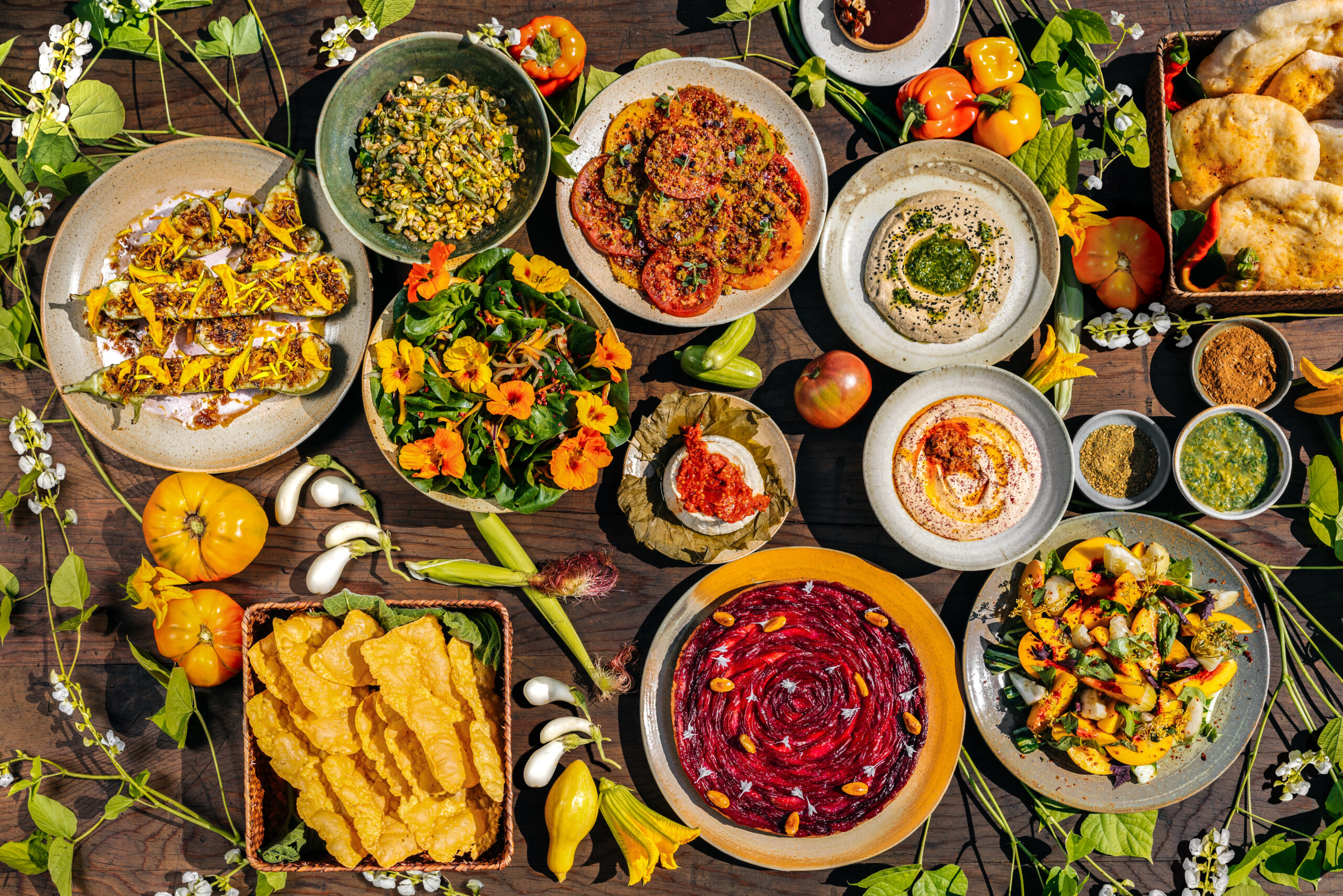
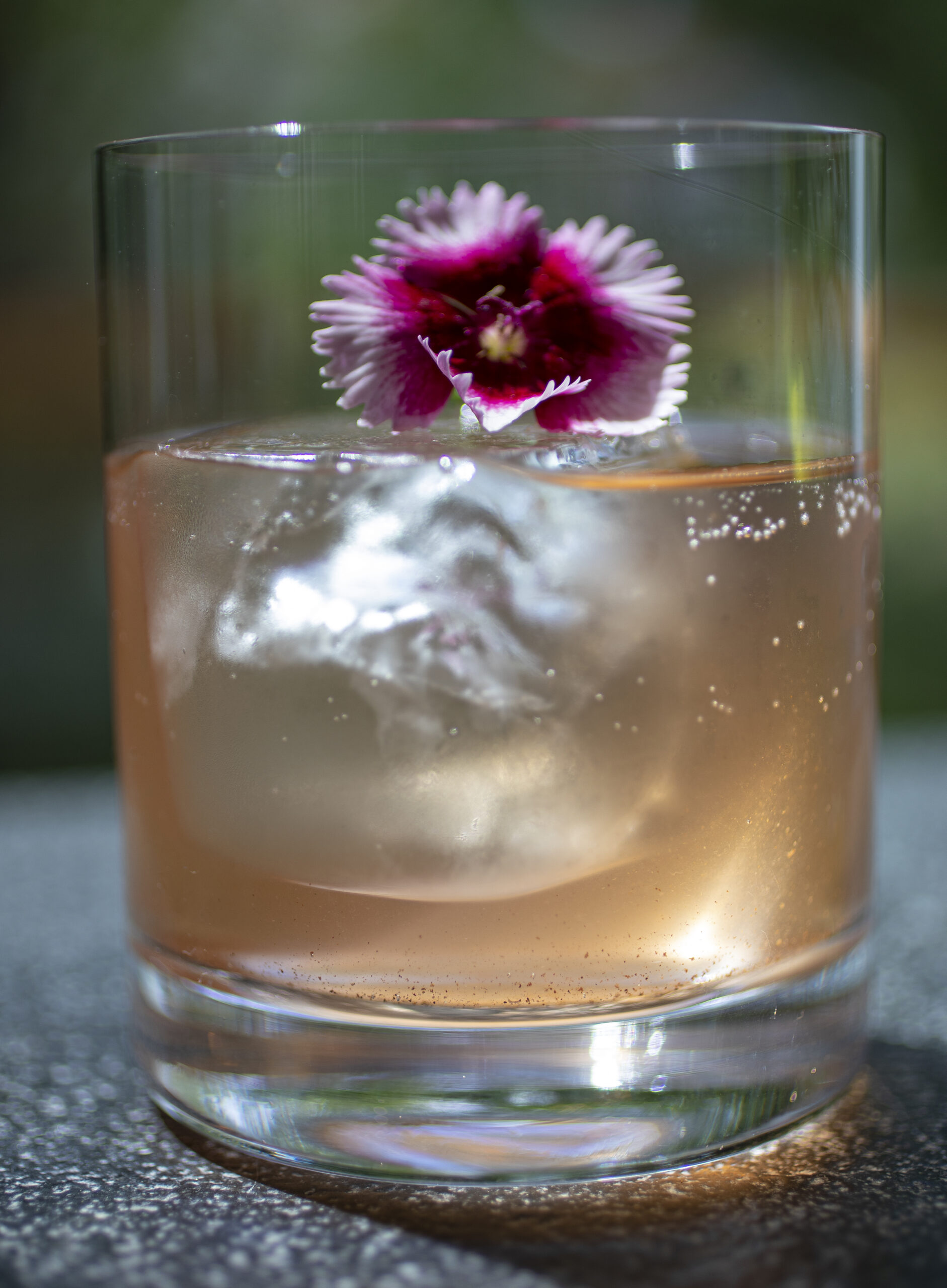
Duke’s Spirited Cocktails founders Laura Sanfilippo and Tara Heffernon partnered with chef Sean Raymond Kelley for a small-plates and cocktails lounge at the former Mateo’s Cocina Latina location. The globe-trotting menu pairs perfectly with best-of-class cocktails. 214 Healdsburg Ave., Healdsburg, 707-756-5021, loandbeholdca.com
Why it matters: This dream project isn’t just for the upper crust. The restaurant stays open late, welcoming fellow food-industry workers to come in after a shift for a drink or three. We’re happy the Duke’s crew have landed on their feet and are making a mark in Healdsburg.
This longtime pop-up’s first brick-and-mortar location serves classic burgers, fries, grilled cheese melts and East Coast hoagies. The Burger Harn ($18), with cheddar, “fancy sauce,” onion butter, red onion and shredded iceberg lettuce gets our nod for the ultimate bun-and-meat combination. 128 N. Main St., Sebastopol, lunchboxsonomacounty.com
Why it matters: If you don’t drool a little at their Instagram (@_lunch_box_), you’re made of more stoic stuff than the rest of us. Burgers aren’t that complicated, but doing them correctly is. That’s why we love this spot so much.
After a complete overhaul of the old Madrona Manor, the restaurant — still headed by chef Jesse Mallgren — has tossed aside complex molecular gastronomy for more approachable but still opulent dishes. 1001 Westside Road, Healdsburg, 707-395-6700, themadronahotel.com
Why it matters: New ownership and a new outlook haven’t totally jived with Mallgren’s earlier approach to dining, but the new menu gives locals a reason to go for more than birthdays and anniversaries. The stunning decor has vastly improved the experience, along with a creative cocktail list and options for lunch and brunch. We’re watching the evolution closely.
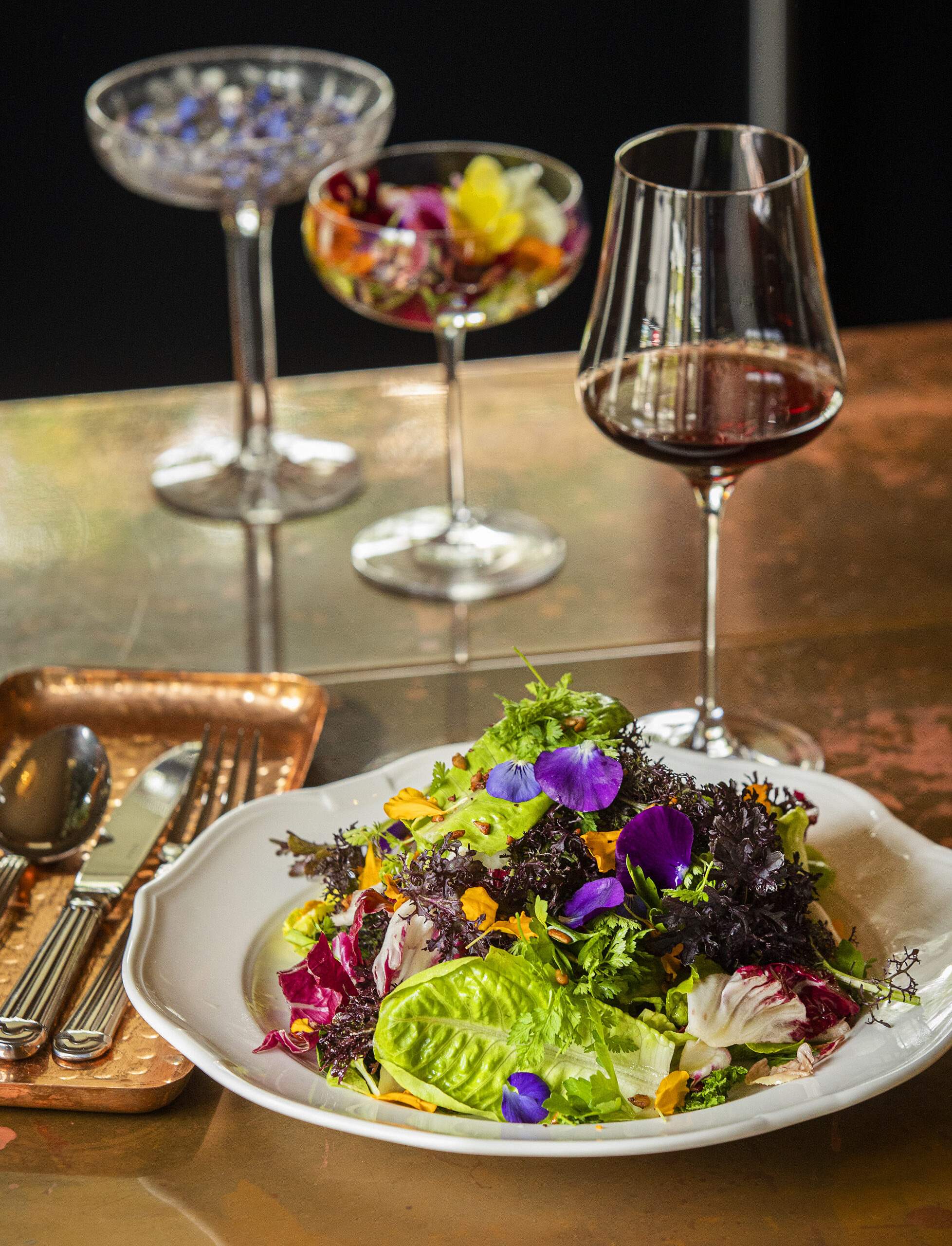
We love the industrial-size Gold Chai Cinnamon morning rolls for $5.50. Everything at the bakery/cafe is vegetarian or vegan, with many gluten-free choices. 5306 Old Redwood Highway N., Petaluma, 707-665-0644, magdelenas.com
Why it matters: A bakery that covers all diets moves the needle. That it looks and tastes incredible makes it a place everyone can enjoy.
This 400-square-foot, Parisian-style seafood cafe at The Barlow is neatly laid out to include nine counter seats and a variety of outdoor tables for al fresco dining. Oysters are, unsurprisingly, a menu highlight. They’re served raw, baked and fried. The rest of the menu leans on sustainable shellfish, fish, prawns and octopus, all approved by the Monterrey Bay Aquarium’s Seafood Watch as “Best Choices” for eating. 6770 McKinley St., Suite 130, Sebastopol, Instagram.com/oyster_sebastopol
Why it matters: The oceans are overfished, and if we aren’t careful, many species could soon be off the menu. Chef Jake Rand (who also owns Sushi Kosho in The Barlow) offers a delicious take on sustainability. And the mix of bubbly and seafood just works.
The vibe might be psychedelic, but this chef-inspired Roman-style pie isn’t messing around. In the spring, the funky pizza pop-up from Bay Area baker Nicholi Ludlow and his wife, Leith Leiser-Miller, found a permanent home in Sebastopol. The shop’s rectangular 9-inch-by-9-inch pizzas are sold by the pound, along with salads, wine, beer and the world’s most buttery cookies. 980 Gravenstein Highway S., Sebastopol. 707-827-6032, psychicpie.com
Why it matters: The small restaurant hosts emerging pop-ups, new wineries and food businesses in addition to serving great pizza. The community-minded couple are helping drive the growth of the Sebastopol food scene and create a vibrant new energy in the west county town.
Chef Sean McGaughey is the guy in the baker’s apron at Troubadour Bread and Bistro, a French-inspired restaurant that pops up five nights a week in the nibble-size bakery he and wife Melissa Yanc founded in 2021. The couple is also behind Healdsburg’s buzzy Quail & Condor bakery that opened in 2020. Troubadour is refreshingly single-minded in its vision of elevated French bistro cuisine, not Cal-Ital or Mediterranean-French or another fusion. It’s just French, with all the unpronounceable but delicious sauces that have been perfected over centuries. 381 Healdsburg Ave. in Healdsburg. troubadourhbg.com
Why it matters: McGaughey and Yanc are Single Thread alums who gained attention making bread at a simple pop-up. They’ve continued to evolve, buoyed by fans, and a full-fledged restaurant is likely to emerge from this young couple. Clearly, they are ones to watch.
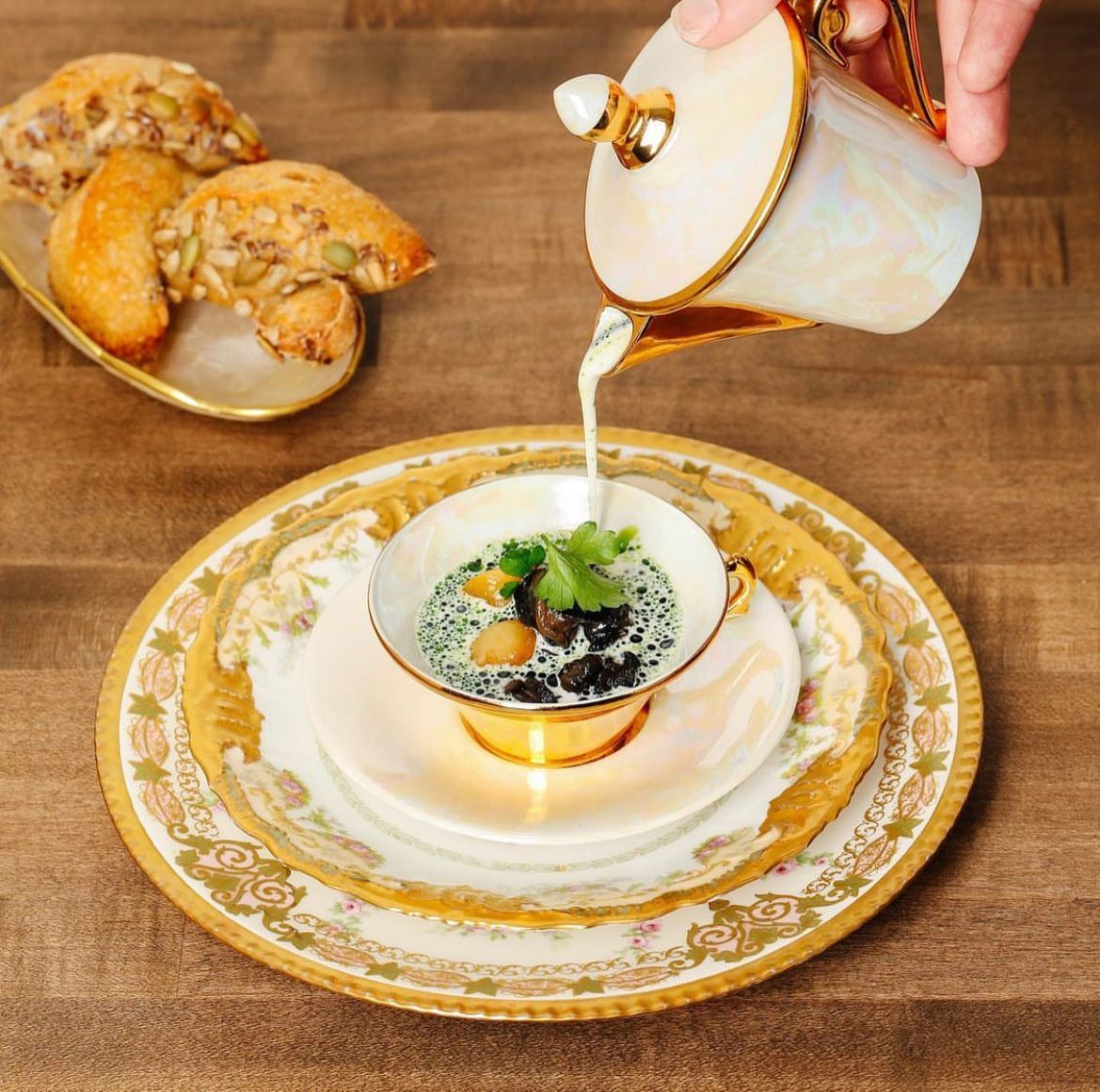
Easy Rider: Easy Rider is that rare bird that fits with the moment, with their approachable Southern-inspired menu, elevated flavors and damn good cocktails on the bustling corner of Kentucky and Washington streets in downtown Petaluma. 33 Washington St., Petaluma, 707-774-6233, easyriderpetaluma.com
Kancha: Chef Angel Cayllahua is an experienced chef and sommelier with a simple but delicious menu of cold and warm tapas-style plates drawn from his Peruvian upbringing and Japanese restaurant training. Cold seafood bites of ceviche, tartare and causas (a Peruvian potato dish) are his specialty. 643 Fourth St., Santa Rosa, 707-623-9793, kanchasr.com
Maison Porcella: Maud and Marc-Henri Jean-Baptiste opened this wine bar and retail location for their French-style charcuterie and wine-import business. You’ll find pates, savory pastries, sausages and charcuterie, ham, chicken liver mousse and pork rillettes, grab-and-go sandwiches (like their signature croque-monsieur), salads and a relaxing wine bar on Fridays and Saturdays. 8499 Old Redwood Highway, Suite 114, Windsor, 707-955-5611, maisonporcella.com
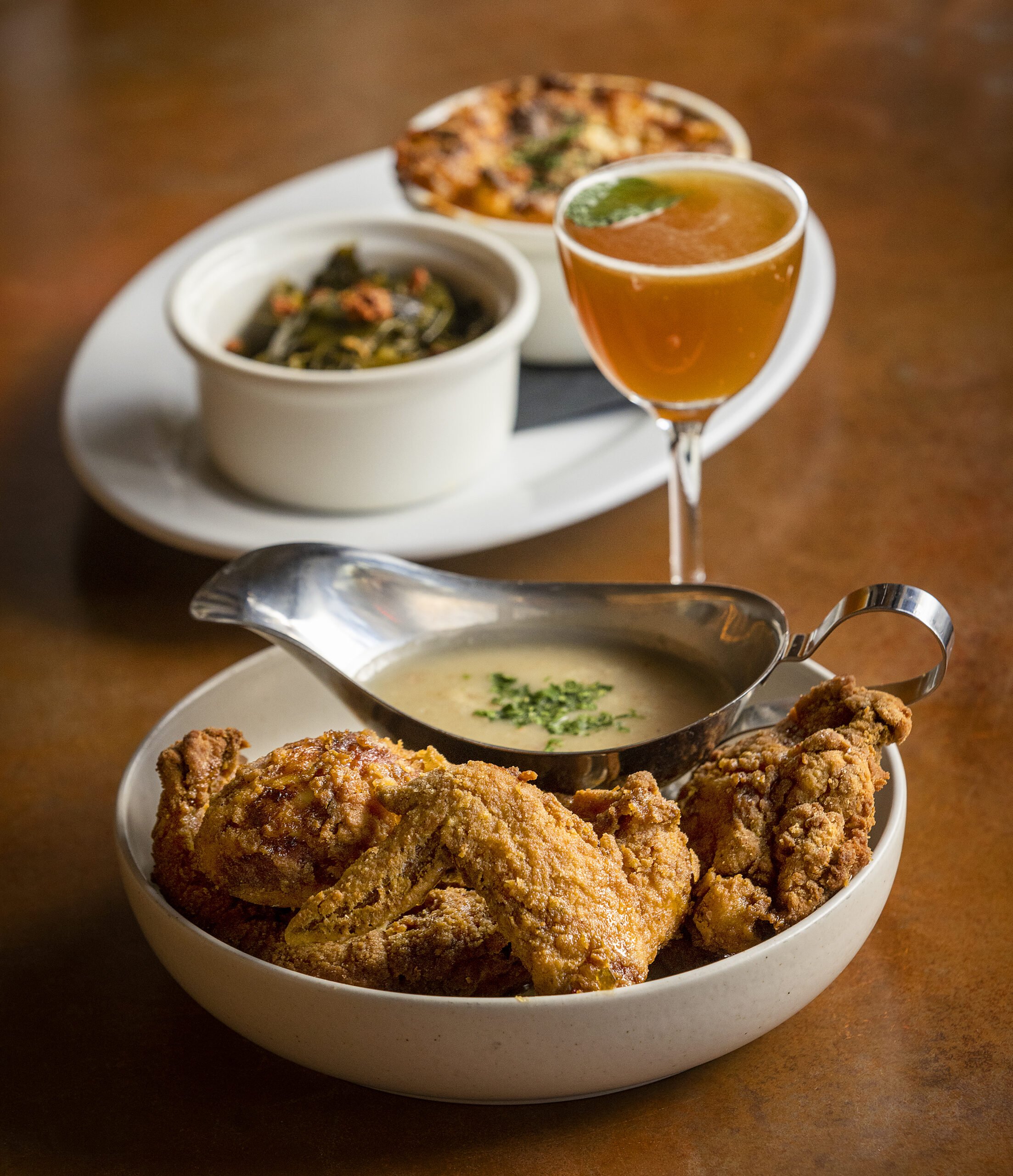
Piala: This Georgian restaurant is a window into the cuisine of the country of Georgia, located at the intersection of Eastern Europe and Western Asia. Co-owner Jeff Berlin wanted to bring its unique flavors to Sonoma County. Piala serves by-the-glass pours of Georgian wine varietals Krakhuna, Rkatsiteli and Saperavi. Georgia is home to one of the oldest wine-growing regions in the world. 7233 Healdsburg Ave., Sebastopol, 707-861-9186, pialanaturalwine.com
Saucy Mamas: Even on a sober Sunday, the joint has the Saturday-night feel of a lively rural roadhouse, with waitstaff bringing out plate after plate of ribs, cornbread waffles and the evening’s special shrimp and grits as fast as the kitchen can keep up. Saucy Mama’s puts the soul in soul food by fusing the deeply Southern flavors of Yvette Bidegain’s family’s Louisiana heritage with her own California culinary twists. 16632 Highway 116, Guerneville, 707-604-7184.
Sol Food: Best bets at this Puerto Rican spot include pollo al horno, maduros (sweet fried yellow plantains), Cubano sandwiches and Tembleque, a creamy coconut pudding with mango sauce. Early on, the dishes disappointed a bit, but the menu has since settled in. Don’t forget a bottle of pique (spicy vinegar) sauce to pour on everything. 151 Petaluma Blvd S., Suite 129, Petaluma, 707-347-5998, solfoodpickup.com
Sonoma Pizza Co.: The open, airy restaurant in downtown Forestville brought much-needed casual, family-friendly dining to the sleepy town and its surroundings. Plus, the pizza is excellent! It opened in early June with wood-fired and traditionally baked pizzas dressed with traditional and not-so-traditional toppings. 6615 Front St., Forestville, 707-820-1031, sonomapizzaco.com
Warike RestoBar: A full bar with pisco sours and other pisco cocktails, plus excellent ceviche, tequeños de cangrejo (wontons stuffed with crab and shrimp) and causa marina (potatoes and crab) make this place worth a visit. The lomo saltado is one of the most flavorful versions around. 527 Fourth St., Santa Rosa, 707-536-9201, warikesf.com

20-course tasting menus are nice and all, but what does a food writer eat off-duty? Lots of affordable meals with all the flavor, heart and soul of fancy food at a fraction of the cost. We’re not saying Michelin-starred dining isn’t amazing, but there’s plenty to eat in Sonoma County that won’t break the bank. Click through the above gallery for a few of our favorite inexpensive restaurants in 2022.

It’s been over three years since we set out to find the best doughnuts around town, so we hit the ground running with big appetites to find Santa Rosa’s standouts. While visiting some of our favorite doughnut shops and cafes, we tasted a variety of sweets, from fritters to cronuts. And, of course, each doughnut received a rating which considered not only flavor but freshness and appearance, too.
See how we scored some of our favorite doughnuts in Santa Rosa. Click through the above gallery for more photos.
Stacked about three inches tall, the Crodough (also known as a “cronut;” a croissant crossed with a doughnut) is love at first bite. This Santa Rosa shop is well known for its unique approach to doughnuts, using russet potatoes for the base of its dough. Their Crodough is a nuanced blend of flakey and moist, with a cinnamon-sugar crispy outside and layers of vanilla custard on the inside. Save your appetite, or share it with a friend, because the Crodough is very filling. $4.35. 1200 Fourth St., Santa Rosa. For more information, go to johnnydoughnuts.com/menu.
Sam’s Donuts has been making their bacon maple bar for 30 years now. It is somewhat of a hidden gem in the world of doughnuts. If sweet and salty suits your taste buds, this one should satisfy your cravings. You can smell the bacon as it heats up, before it is served warm atop the maple bar. As a bonus, you can pick up a few convenience store items while you wait for your special treat. $3.50. 1031 Petaluma Hill Road, Santa Rosa. For more information, call 707-521-9303.
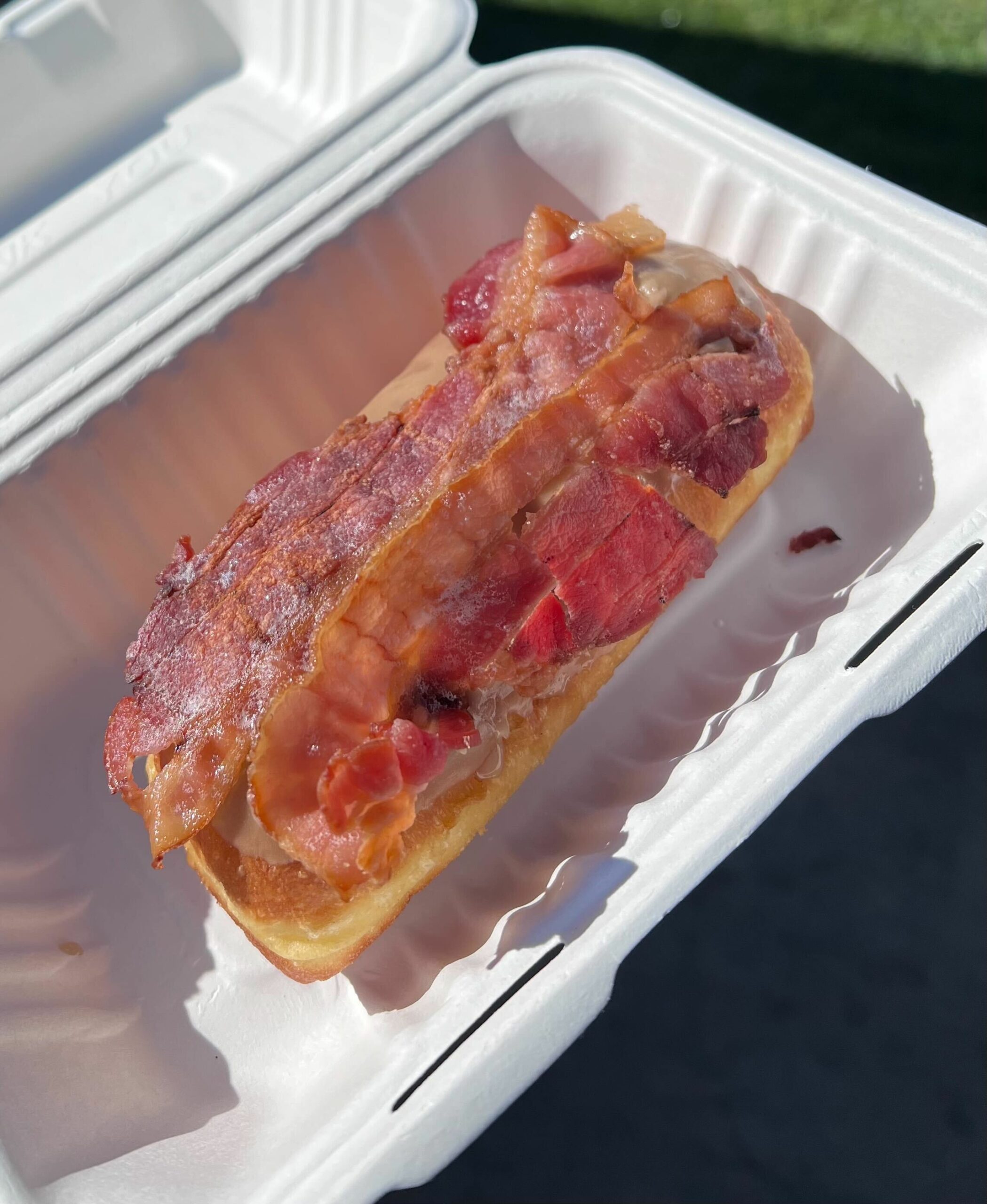
Sometimes, simplicity goes a long way. Tan’s buttermilk bar doughnut is a wonderful example of this. It’s the kind of doughnut that anyone can enjoy, with a crispy outer layer and a cakey inside. You can taste how fresh it is with every bite. Though this doughnut has its roots in Southern California, Tan’s on Fourth Street bakes this bar with great skill. $1.85. 1074 Fourth St., Santa Rosa. For more information, call 707-568-3988.
If filled doughnuts strike your fancy, Donuts and Bagel Cafe is the place to go. Choose from bars or heart-shaped (that’s right, it’s adorable) doughnuts that are either sugared or glazed, and next pick your filling: raspberry jelly or custard. On demand filling adds to the element of freshness, as well as the experience. The raspberry-filled, heart-shaped doughnut is the ideal ratio of pastry to jelly. $2. 750 Stony Point Road, Suite A120, Santa Rosa. For more information, call 707-285-1012.
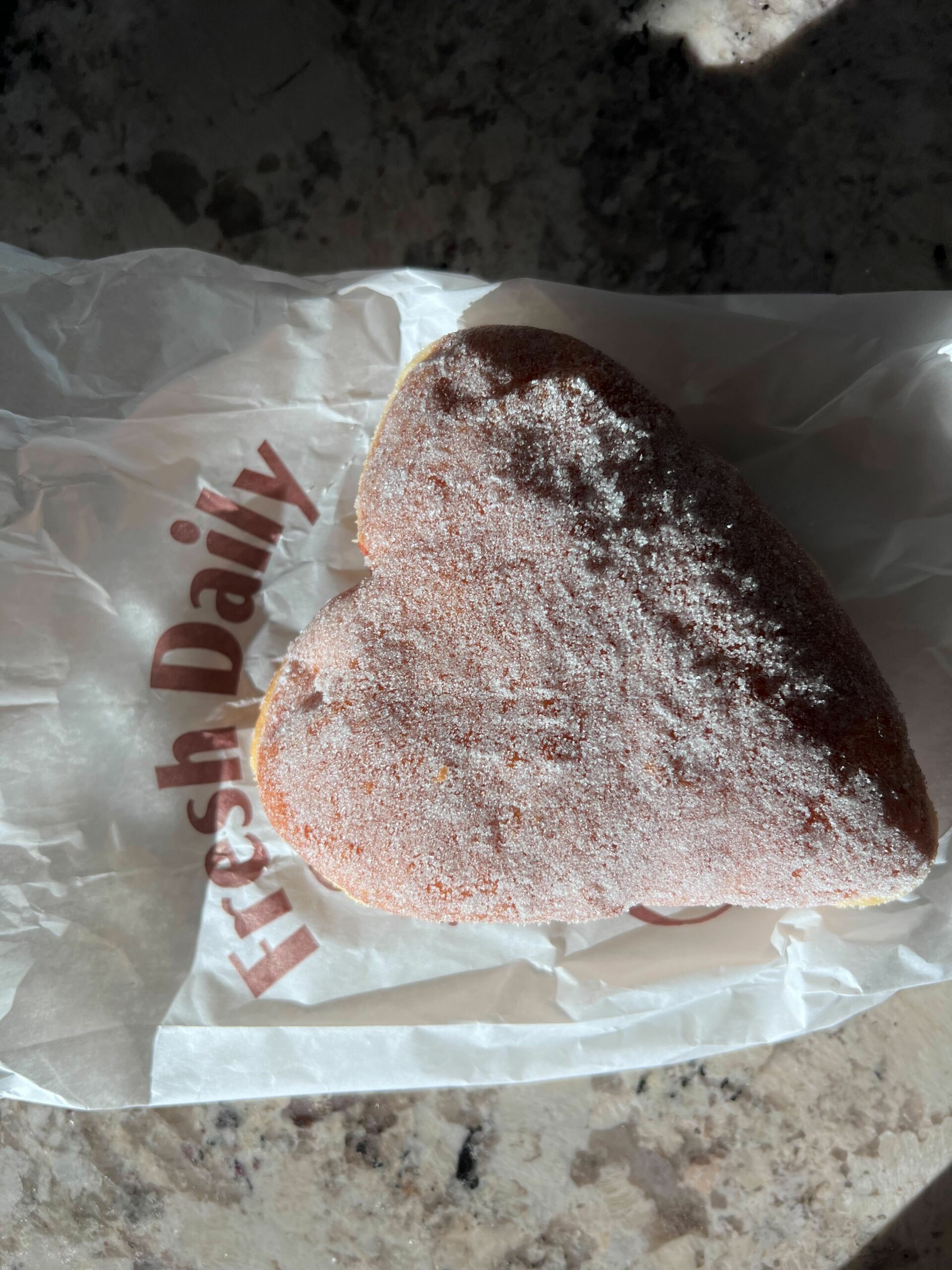
Lemon curd-filled doughnuts are few and far between, which makes this treat from Jelly Donut so special. It’s tangy and sweet, and classically covered in powdered sugar, which balances the flavors. Honestly, it would be wrong to pass up a jelly doughnut at a place called Jelly Donut — but why not try one of the more unique choices while you’re there? Lemon lovers, this one’s for you. $1.75. 443 Dutton Ave., Santa Rosa. For more information, call 707-544-8494.
This might just be the largest fritter around. Larger than the average hand, it’s an absolute treat. It’s not often that you come across a blueberry fritter (while apple fritters are a common treat at most bakeries), when you do, it’s hopefully as tasty as Tan’s. Comparable in flavor to a blueberry muffin, the fritter has the classic crispy glazed shell with a thick and moist doughnut-like inside. Similar to the crodough, this fritter is perfect for sharing, too. $2.75. 1074 Fourth St., Santa Rosa. For more information, call 707-568-3988.
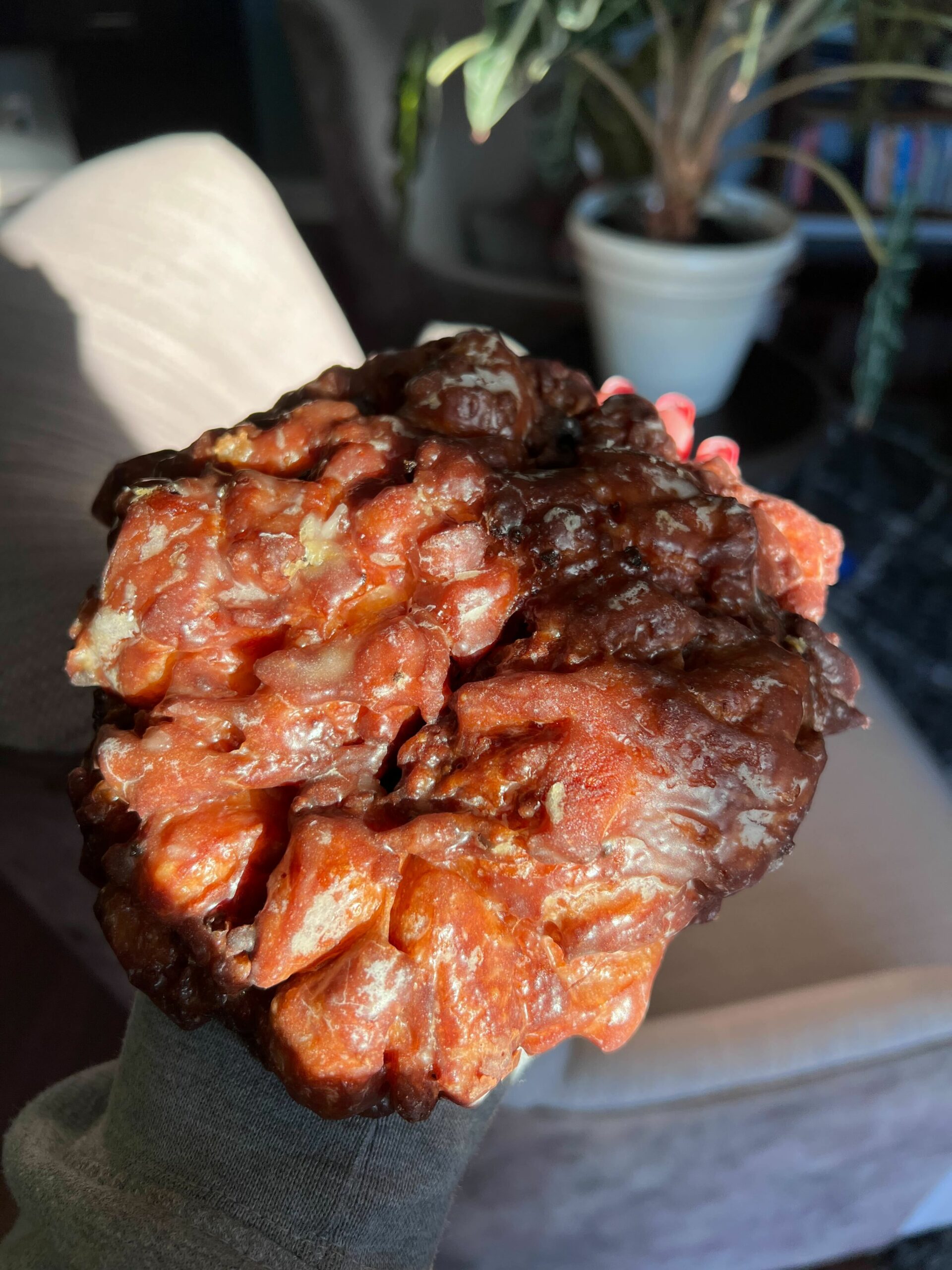
A unique take on a classic, this large, circular maple old fashioned is decadently dense and cakey. The dough is sour cream based, making for a moist, almost chewy bite. This toasty doughnut has a hint of spice, which comes from the infusion of cinnamon, nutmeg and ginger in the dough. Arguably, this old fashion is a little underrated among its peers in the shop. Pair it with their old fashioned latte. $5.25. 1200 Fourth St., Santa Rosa. For more information, go to johnnydoughnuts.com/menu.
You can reach intern Lonnie Hayes at lonnie.hayes@pressdemocrat.com.
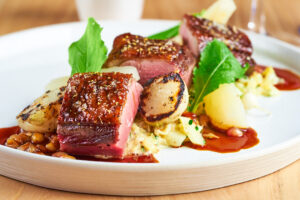
You’re already busy enough this holiday season, so why not make things a little easier? When it comes to the cooking, local restaurants, caterers and grocers have you covered. Whether you prefer to dine in, order takeout or shop for take-and-bake meals, there are plenty of options for holiday dining throughout Sonoma County.
Ricky’s Eastbound: Preorder Christmas Eve dinner by Dec. 16 for takeout or delivery. The meal package includes Ricky’s red wine braised short ribs, mashed potatoes, dinner rolls with butter, wood oven-roasted Brussels sprouts with bacon, and a mixed greens salad with candied walnuts, dried cranberries and golden raisins. Choose from a meal for two for $145, or a meal for four for $280. To place orders, call 707-536-6606 or email rickyseastbound@gmail.com. Orders will be ready Dec. 23. 5755 Mountain Hawk Drive, 707-843-5143, rickyseastbound.com
Little Saint: Preorder a spectacular Bûche de Noël with a speculoos cookie base, chocolate sponge, milk chocolate croustillant with almonds, hazelnuts and dried figs. Luscious buttercream, accentuated with candy cap mushrooms, a cocoa glaze and chocolate decor, complete the Yule log centerpiece. Little Saint also is offering a four-course prix fixe Christmas Eve Supper ($95 per person) with an optional wine pairing ($50). Details at exploretock.com/littlesaint. 25 North St., Healdsburg.
Quail and Condor: Preorder dessert to pick up and take home for the holiday. Try the Bûche de Noël, a yule log made with halvah cremeaux, for 8 to 12 people. Also available is Nusstorte, a pastry filled with caramelized hazelnuts, walnuts and pecans, for 8 to 10 people; or a Christmas Cookie Box that includes ginger cookies, chocolate financiers, lemon shortbread and snowball cookies (12 cookies in total). Place orders online until Dec. 18, and pick up between 8 a.m. and noon Dec. 24. $41.21 to $61.80. 149 Healdsburg Ave. 707-473-8254, quailandcondor.com/holiday
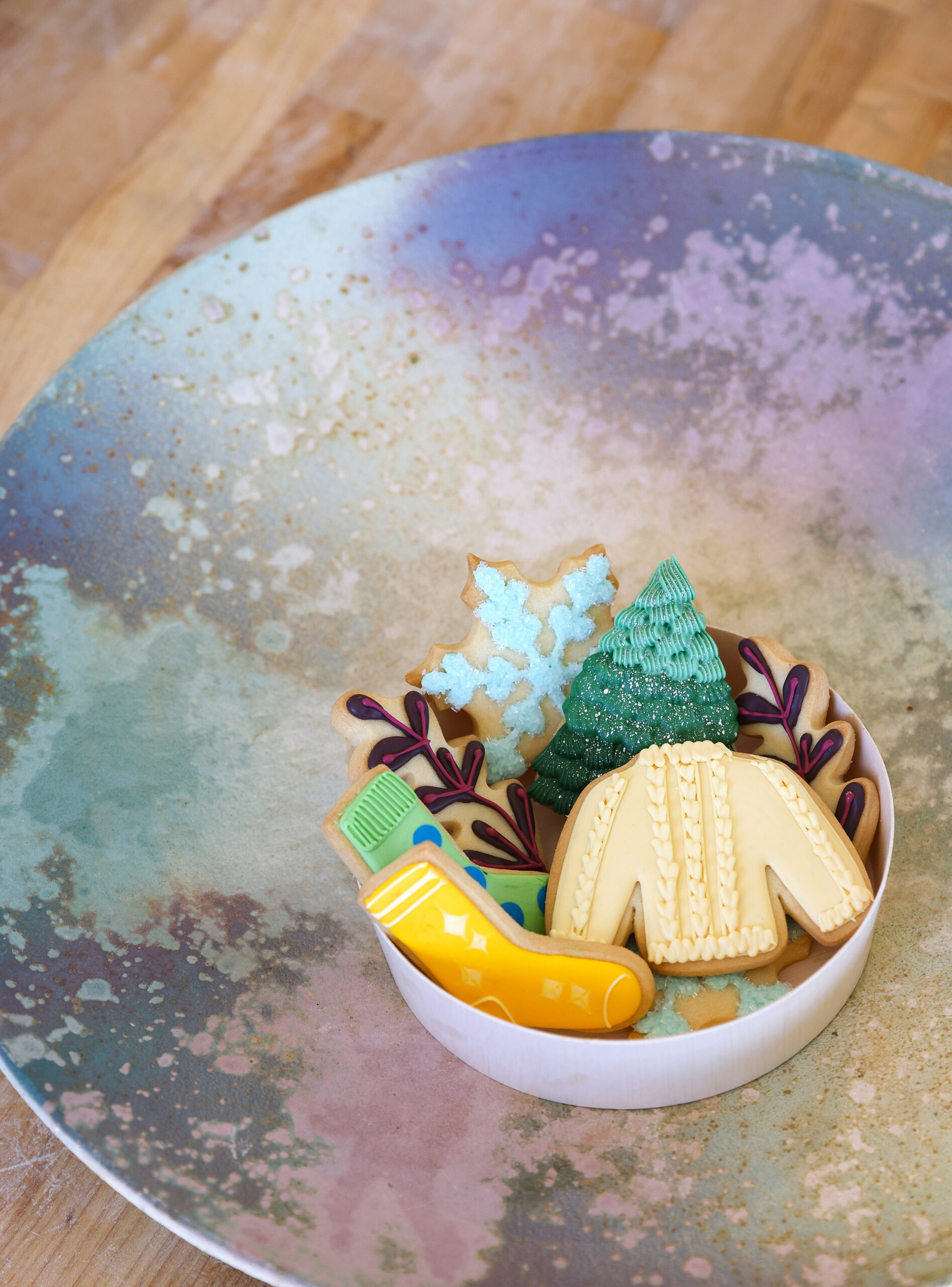
Spoonbar: Three-course prix fixe menu for dining in from 2 to 8 p.m. Dec. 25. Start with dishes like Front Porch Farm baby beet salad or Dungeness crab salad. Main course choices include New York steak, duck breast or Mr. Duncan’s Mushroom Risotto. For dessert, choose between seasonal cheesecake, olive oil cake, chocolate bread pudding and baked Alaska for two. Children 12 and under can choose from rigatoni, chicken and fries, or a cheeseburger and fries. $89 for adults, $35 for children. Make reservations by calling 707-433-7222 or online at bit.ly/3j6I3lM. 219 Healdsburg Ave., spoonbar.com
Valette: Christmas dinner with prepaid pickup. Choose between a 20-ounce filet mignon with truffle butter and a side of roasted veal demi-glace ($110); or 1 ounces of the signature Ostera Caviar with egg, onion, creme fraiche and homemade brioche ($65). Wine packages are available for add-on, from $111 to $265. Preorder online at exploretock.com/valette and pick up Dec. 23 between noon and 4 p.m. 344 Center St., 707-473-0946.
Glen Ellen Star: Preorder takeout Christmas dinner. An option for two is the Beef Wellington, served with black truffle Bordelaise ($150). For a more substantial meal, add on sides that include housemade rolls, chicory Caesar salad, au gratin potatoes, creamed arrowhead spinach and sticky toffee pudding ($200). For a vegetarian option, opt for the mushroom and winter root vegetable pie that serves six ($65). Order at bit.ly/3uq9aKZ. Place orders between 7 a.m. and 10 p.m., pick up orders 10 a.m. to 1 p.m. Dec. 25. 13648 Arnold Drive, Glen Ellen. 707-343-1384, glenellenstar.com
Layla Restaurant at MacArthur Place: Prix fixe brunch, served 7:30 a.m. to 2:30 p.m. Dec. 24 and 25, will include shareable bites such as fresh maple pecan scones, smoked salmon avocado toast, gingerbread crumble and eggnog Chantilly. After the bites, choose from entrees such as lemon ricotta pancakes, short rib hash and eggs, and crab cake Benedict. $65 for adults, $35 for children.
Prix fixe Christmas Eve and Christmas Day dinners will be served 5 to 8 p.m. and feature bites like hamachi crudo, curry pumpkin bisque, pork tenderloin and fresh scallops. Guests can add Burgundy Black Truffle or Tsar Nicoulai Estate Caviar to each dish. Dessert options include a chocolate croissant pudding, poached pear or basque cheesecake. Cocktail and wine pairings are available upon request. $110 for adults, $45 for children. 29 E. MacArthur St., Sonoma. 707-938-2929. macarthurplace.com/food-drink/layla-restaurant
Sonoma Grille: Dine in 4 to 9 p.m. on Christmas Eve. The menu will include starters such as Caesar salad and clam chowder, or “Ocean View” seafood options like steamed mussels, oysters or Monterrey Bay calamari. Entrees include prime rib, lobster risotto and saffron pappardelle. There will be dessert specials, as well as creme brulee, chocolate torte and tiramisu. Reserve a table at bit.ly/3UChbqN. 165 West Napa St., Sonoma, 707-938-7542, sonomagrilleandbar.com
Wit & Wisdom: Three-course prix fixe meal for dining in on Christmas Day. Starters include King Crab and endive Caesar salad, and tagliatelle with truffle. Main course choices include beef short rib with truffle jus, and sea bass with roasted cauliflower and fennel puree. For dessert, options include white chocolate gingersnap sundae, creme fraiche crepe cake, and a dark chocolate candy bar. Reservations available from 4:30 p.m. to 6 p.m. Dec. 25. $115 per person. Make reservations at bit.ly/3Be2jI8. 1325 Broadway, Sonoma. 707-931-3405. witandwisdomsonoma.com
Tips Roadside: Christmas dinner to-go. The menu includes three meals that serve four, including fried chicken ($180), prime rib ($300), and a combination of prime rib and fried chicken ($400). Sides include mashed potatoes, grilled vegetables, rolls and a holiday wintergreen salad. Dessert choices are a homemade cheesecake or homemade caramel apple pie. Place orders at tipsroadside.com until Dec. 20. Pick up orders noon to 2 p.m. Dec. 24. 8445 Sonoma Highway, 707-509-0078. tipsroadside.com
Stellina Pronto: Holiday sides and desserts both sweet and savory. Their sweet menu has Italian panettone, apple crostata, olive oil cake with Grand Marnier, take-and-bake cinnamon rolls or a dozen assorted Christmas cookies. Savory options include Dungeness crab bisque, veal osso buco, lasagna Bolognese or a truffle mushroom lasagna with roasted mushrooms, truffle Bechamel sauce and Parmesan. Preorder by Dec. 21 at stellina-pronto.square.site or call 707-789-9556. 23 Kentucky St., Petaluma.
Stockhome: A traditional Swedish julbord — a family-friendly meal featuring holiday specialties — will be available to-go Dec. 23. The julbord serves two and includes a variety of pickled herring (mustard, grandma’s classic, saffron and leek), dill-cured salmon (“gravlax”), hot mustard-baked Christmas ham (“julskinka”), ginger-glazed spareribs, Swedish meatballs and more. For dessert, there’s Santa’s rice pudding. All menu items are made from scratch by Swedish chef Roberth Sundell, including a pig’s head terrine (“sylta”) and pâté of elk (lantpâté). Order online at bit.ly/3Pya7dD and select a time to pick up your order between 5 and 7 p.m. $180.00 for two. 220 Western Ave., Petaluma, 707-981-8511, stockhomepetaluma.com
Down to Earth Cafe: Preorder Christmas Eve takeout. Three meals are offered: prime rib with potato and mushroom gratin, grilled broccolini, rosemary jus and Horsey sauce ($60 per person); short ribs with mashed potatoes, roasted Brussels sprouts and delicata squash hash, Horsey sauce and red wine sauce ($55 per person); and a crab roll kit with fresh Dungeness crab, torpedo rolls, garlic-herb butter, hand-cut Kennebec potato chips and side salad ($28 per person). (The prime rib and short rib meals include a Little Gem Caesar and choice of butterscotch pudding or sticky toffee pudding for dessert). Place orders by 8 p.m. Dec. 21 by calling 707-753-4925, and pick up between 11 a.m. and 6 p.m. Dec. 24. 8204 Old Redwood Highway, 707-753-4925. dtecafe.com
Agriculture Public House at Dawn Ranch: Three-course prix fixe meal for dining in on Christmas Eve. Start with fritto misto with sweet yams, or warm spinach artichoke dip with rosemary focaccia. Then, choose between winter wedge salad, grilled Caesar salad or fall pumpkin soup. Main course choices are chicken breast with grilled polenta, pan seared skin-on salmon, or filet mignon with asparagus and potatoes. Guests can add on one of the following desserts for $12: peppermint cheesecake, Bûche de Noël or Pennsylvania Dutch mousse. $79 for adults, $35 for children 12 and under. Reservations available from 5 to 8 p.m. Make a reservation by calling 707-869-0656 or at bit.ly/3BalbHV. 16467 California 116, dawnranch.com/dining.htm
Coast Kitchen: Three-course prix fixe meal for dining in from 4 to 7:45 p.m on Christmas Ev . Starters include mushroom soup and pomegranate salad with smoked goat cheese. Main course choices include Oak Ridge Farms beef wellington, pan seared duck breast, and Columbia River steelhead trout. Dessert choices are chocolate bread pudding, gelato and sorbet. $85 for adults, $35 for children 12 and under. Reserve a table at bit.ly/3UDABeW. 21780 CA-1, Jenner. 707-847-3231. coastkitchensonoma.com
Oliver’s: Preorder and reheat Christmas dinner for six to eight people in two hours. For $149.99, receive the following in the Complete Holiday Dinner package: medium Dietsel turkey, stuffing, mashed potatoes with chives, vegetable medley, cranberry sauce, turkey gravy and a dozen pull-a-part rolls. Preorder at oliversmarket.com/product/holiday-dinner-cotati. Orders can be picked up Dec. 24. Stores will be closed Dec. 25. For more information, visit oliversmarket.com/store
Raley’s: Preorder a heat-and-eat Christmas dinner, with four platters, two main courses, five sides and seven dessert options. Main courses in the meal deals include prime rib, Diestel turkey, butterball turkey or bourbon pineapple glazed ham, varying in price from $89.99 to $149.99. The glazed ham and Butterball turkey are also available a la carte. Meal deals include select sides, or order the sides a la carte to build your own meal. Dessert options include chocolate cherry forest cake, fruit tart and apple pie. Discounts on wine pairings are available. Preorder online at bit.ly/3W0r4zW for pickup Dec. 21 to Dec. 24.
Safeway: Preorder a precooked meal, choosing from three different options. One option is the prime rib dinner for five to six people, with sides including scalloped potatoes, green bean casserole, mashed sweet potatoes and spiced apples ($89.99). Another option is the spiral ham dinner for eight to 10 people, with the same previously mentioned sides ($69.99). Lastly, the turkey dinner for six to eight people is paired with mashed potatoes, stuffing, gravy and cranberry sauce ($59.99). Visit bit.ly/3HtJ15N to order ahead from a store near you.
Whole Foods: Preorder your Christmas dinner, with a large assortment of holiday meal packages. Varying in prices and sizes, options include main courses such as lobster tail, beef tenderloin, braised lamb shank, Atlantic salmon and roasted turkey. Meals can serve four, eight or 12. (Vegan option available for two.) Additionally, sort through over 35 appetizer options. Order 48 hours ahead at wholefoodsmarket.com/shop/COD to pick up Dec. 23 or 24. More information available at wholefoodsmarket.com
Sprouts Farmer’s Market: Preorder and reheat your choice of dinner from five different holiday meal packages. Varying in serving size, choices center around a spiral-sliced ham, boneless beef rib roast, roasted boneless turkey breast, natural turkey or a vegan meal. Sides for these meals include stuffing, creamed kale and spinach, scalloped potatoes, cranberry sauce, plant-based sweet potato casserole and more. $43.99 to $95.99. Orders can be made for delivery and curbside pickup. Visit sprouts.com/order-holiday-dinner-online to place your order. 401 Kenilworth Drive, Suite 1040, Petaluma. 707-789-4976. sprouts.com/store/ca/petaluma/kenilworth-dr
You can reach intern Lonnie Hayes at lonnie.hayes@pressdemocrat.com.

To heck with the cookies — bring us a peppermint brownie ice cream taco ($8) from Two Dog Night Creamery.
This holiday showstopper starts with a waffle-cone taco shell filled with pink peppermint ice cream, then topped with brownie bits, a chocolate coating and peppermint candy sprinkled on top.
Available at the Barlow shop in Sebastopol and 9240 Old Redwood Highway, No. 100, Windsor. twodognightcreamery.com
Pie pop-up: After a decade in the business of pastries, cakes, pies and savory sandwiches, Criminal Baking Co. owner Dawn Zaft has announced she’ll expand her Santa Rosa pastry and catering business to include a new pie pop-up shop at the Miracle Plum commissary kitchen at 600 Wilson St. (Miracle Plum will be closing its 208 Davis St. shop Jan. 1.)
The Criminal Baking space at 808 Donahue St. will remain a commercial location for breakfast and lunch. The pie pop-up will begin Jan. 12 at the Wilson Street Kitchen.
Stay tuned for more details at facebook.com/CriminalBakingCompany.

Miracle Plum was never just a gourmet pantry, wine shop and place to pick up adorable housewares in Santa Rosa’s Railroad Square. It was owners Sallie Miller and Gwen Gunheim’s brick-and-mortar love letter to Sonoma County food and wine.
But after four years of business struggles, the duo is calling it quits and will officially close the shop Jan. 1. Miracle Plum is just one of more than a dozen restaurant and retail food spaces that have closed in 2022.
“The last four and a half years have been the full range of experiences. We have had the highest highs and the lowest lows. When we initially delayed our opening because of the 2017 fires, we knew we were signing up for uncertainty, but we had no idea just how uncertain things would get,” said a press release announcing the closure.
Rising food costs, a lack of staff, inflation and a changing food landscape piled on top of winter’s minimal tourist traffic and unpredictable weather have accelerated the list of recent closures, including Cafe Zazzle in Petaluma, Zimi on Mission in Santa Rosa, Fork Roadhouse in Sebastopol, Campo Fina in Healdsburg and Trading Post in Cloverdale.
“When we conceived of Miracle Plum, we intended to create a love letter to all of the moments in food that have informed who we are. It’s about the rose tea our aunt always has at the ready when we visit. The smorgasbord breakfast we had at 15 while visiting family in Norway. The sweet pastry chef who inspired us in the restaurant kitchen at 16,” said the longtime friends and business co-owners.
Miracle Plum was a launch pad for local food entrepreneurs and hosted pop-ups and classes for small groups. Miller and Gunheim spent years curating the perfect regional olive oils, hard-to-find spices, and women-owned natural wine brands. In November, they welcomed Marla Bakery to share the space Fridays through Sundays.
Their passion for celebrating the makers, farmers and flavors of Sonoma County was infectious to all who entered the store. Fortunately, the brand will continue at the Miracle Plum online shop (miracleplum.com), with house products (granola, spices and teas), housewares and natural and low-intervention wines via a Wine Club.
The 208 Davis St. shop will remain open from 11 a.m. to 7 p.m. Tuesday through Saturday and from 11 a.m. to 5 p.m. Sunday (closed Monday and Christmas Day, open until 3 p.m. Christmas Eve) until Jan. 1. Miller and Gunheim will also host a New Year’s Eve party at the shop from 11 a.m. until midnight.
“Our hearts are only heavy because they are so very full,” said the closure announcement.
Miracle Plum is located at 208 Davis St., Santa Rosa. miracleplum.com
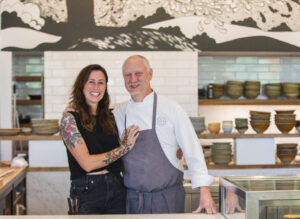
After nearly three years of collaboration, Single Thread owners Kyle and Katina Connaughton’s Vertice Hospitality is ending its management of Healdsburg’s Little Saint. Vertice Hospitality and Little Saint, owned by Jeff and Laurie Ubben, seem to be parting amicably, though no specific reason for the change was given.
The Ubbens began working with Vertice Hospitality in 2020, soon after they purchased the 10,000-square-foot multi-use space, which formerly housed Healdsburg SHED. Under the Connaughton’s guidance, Vertice built out a plant-focused food program with a sit-down restaurant, wine shop and grab-and-go retail cafe, as well as management of day-to-day culinary operations by Little Saint Director Jenny Hess.
Little Saint officially opened in April 2022, and shortly thereafter, the restaurant was included in The New York Times’ “Best 50 Restaurants in the U.S.” and Vegetarian Times’ “Best New Restaurants.”
“Our initial concept for Little Saint was to return a treasured destination to our town of Healdsburg in the form of a plant-based all-day gathering place. The intent was to celebrate our farmers and our rich local talent while standing up for what we believe in — kindness to our community, to our planet, and to all beings,” said the Ubbens in a press release. Jeff Ubben is a Bay Area philanthropist and Laurie Ubben is an animal activist. Neither was immediately available for comment.
The couple will assume management of Little Saint in early January 2023, taking over all food and beverage operations. A focus on plant-based offerings will continue.
“Thanks to the efforts of this team and our dedicated farmers and vendors, we have laid a foundation for culinary innovation. It’s with much gratitude and excitement that Little Saint is ready to pick up where Vertice leaves off,” the Ubbens said.
The Connaughton’s Vertice Hospitality will refocus its efforts on creating agricultural experiences at the Single Thread farm in Dry Creek Valley, reimagine the experience at Healdsburg’s River Belle Inn (purchased in 2022), and “reveal some other new projects currently in development.”
“We are proud to have been a part of this very special collaboration within our community and to have the opportunity to participate in Little Saint’s ideation to operating all the way through its first year. We are excited to see what’s next for Little Saint and to watch it grow and thrive under new management,” the Connaughtons stated in a press release. They were also not available for immediate comment.
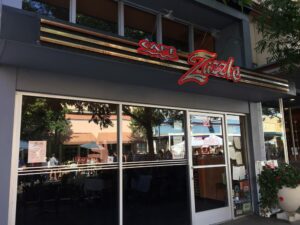
Cafe Zazzle, a longtime fixture on the downtown Petaluma restaurant scene, has closed, according to co-owner Tara Williams.
Located on Kentucky Street, the restaurant served an eclectic menu of noodle bowls, wraps and salads for 17 years before financial difficulties forced Williams and her husband, Rick, to make the difficult decision to close.
“People think COVID-19 is over, but it hasn’t been in terms of numbers,” Williams said. She said that longtime regulars who stopped by two or three times a week stopped coming as their daily patterns changed, and people started cooking more at home.
“(We) just didn’t bounce back. Destination dining might be coming back, but not the three-times-a-week places like us. It’s just a different world now,” Williams said.
For the last two years, the couple supported the restaurant with retirement savings but said they no longer have the finances to continue.
Williams hopes to sell the restaurant to a new owner.
“We’re just trying to get this behind us. We’re just really grateful to Petaluma for supporting us all these years,” she said.
Zazzle is one of nearly a dozen Sonoma County restaurants closed in 2022. Rising food costs, a lack of staff, inflation and a changing food landscape piled on top of winter’s minimal tourist traffic and unpredictable weather have accelerated the list of recent closures, including Zimi on Mission in Santa Rosa, Fork Roadhouse in Sebastopol, Campo Fina in Healdsburg and Trading Post in Cloverdale.